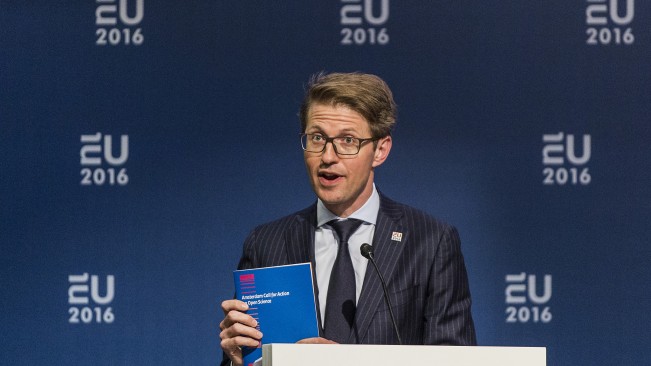
Read the Amsterdam Call for Action on Open Science wiki
The underpinning vision of the Digital Single Market, of which EOSC [European Open Science Cloud] is an essential part, is the free movement of goods, persons, services and capital; the access and online services available for citizens and business at fair competitive conditions; and the protection of consumer and personal data.
Therefore the EOSC envisioned as a federated globally accessible environment where researchers, innovators, companies and citizens can publish, find and re-use each other´s data and tools for research, innovation and educational purposes - must enable open and transparent movement of knowledge, funding of [human and technical] infrastructure to optimally leverage existing resources, and optimise future investment in a trusted, sustainable and just value for money model.
In short the ambition is to close the value loop between Open Science, the Digital Single Market and the Public Interest. The value loop engages many stakeholders (e.g. research communities; research projects and H2020 projects (both data intensive and long tail); public data centres and service providers; commercial service providers, industry; society/citizens; EC, member states, councils, and more). Ideally the EOSC should meet all stakeholders' needs to fulfil their role(s) in the research process.
Therefore stakeholder's demand (for required infrastructure and services), supply (of infrastructure services, research output) and the funding of these need to be given due and balanced attention if the EOSC is to be a success and become sustainable. Each required part of the value loop needs to exist, with clear responsibility, incentives, business model and visible benefits.
In order to do so we recommend to give close attention to communication, to inform and involve all stakeholders and to target quick wins. It is important to aim to meet tangible challenges, be these contributions to new knowledge, innovation or ease of access and collaboration, or enhanced funding and business models.
The ambition of the EOSC is to ensure that research is improved, answers to grand challenges accelerated, knowledge transfer increased, innovation and productivity sped up, and have citizens engaged in research and innovation. Europe enjoys a rich set of research infrastructures which are critical to the delivery of the EOSC. Collaboration across these parties, be they disciplinary or cross-domain infrastructures, public or private, in the traditional research domain or beyond, is crucial.
Therefore to fulfil the ambitions of the EOSC it is essential that the development and implementation of the concept is more inclusive than it is now. We observe that currently talks and considerations on the EOSC are largely focused within the traditionally engaged stakeholder group of infrastructure and service providers that serve the needs of specific research communities. It is important to realise that the full range of stakeholders mentioned above should be engaged in establishing and will benefit from the EOSC.
Our recommendation is that any action towards closing the value loop in a realistic and sustainable way should follow an inclusive approach in which research, industry, public sector and society are brought in close concert.
With a more inclusive approach the EOSC will be able to support the researcher in the entire research workflow and improve and accelerate communication of ideas and objects (inspiration!) in all phases of the research lifecycle to all - traditional and other - stakeholders and actors. Thereby fostering better research, increased collaboration, public engagement and innovation based on a sustainable financial model.
* Image credit: Dutch Government/Valerie Kuypers, Amsterdam 5 April 2016, Closing session Open Science Conference with Secretary of State Sander Dekker of Education, Culture and Science. CC BY 2.0









